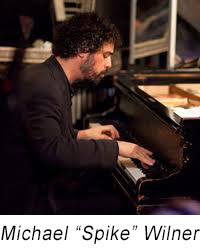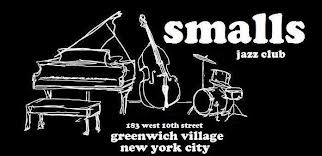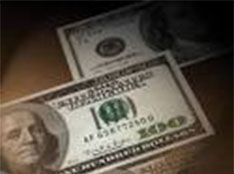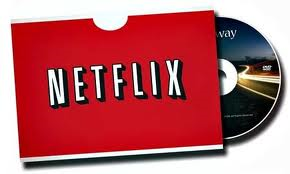The Marlowsphere Blog (#57)
 The last two blogs have dealt with Brian Gruber’s (ShowGo.tv) vision to install remote controlled television cameras and audio technology in jazz clubs all over the world (Part I) and the parallel of this approach to leveraging performances/events to the sports world (Part II).
The last two blogs have dealt with Brian Gruber’s (ShowGo.tv) vision to install remote controlled television cameras and audio technology in jazz clubs all over the world (Part I) and the parallel of this approach to leveraging performances/events to the sports world (Part II).
This week’s blog takes a look at the concept on the ground level, so to speak. This blog contains comments from one of two jazz club executives recently interviewed who have been “streaming” within the last year: Michael “Spike” Wilner of Smalls (West 10th and Seventh Avenue). Next week this blog will report on an interview with Daniel Gallant of the Nuyorican Poets Café (East 3rd Street between Avenues B and C). Both clubs are in New York City.
Smalls
New York-born Spike Wilner was inspired to play ragtime piano at a young age after seeing a docudrama on the life of Scott Joplin. This led to a life-long passion for piano playing, ragtime and jazz music. Spike made his performance debut at the age of 14 by playing Joplin’s Maple Leaf Rag at the St. Louis Ragtime Festival, then held on the Goldenrod Showboat moored on the Mississippi River. Spike continued his music studies through high-school and participated in its award winning jazz band. Spike entered the first class of the New School For Social Research’s Jazz and Contemporary Music Program, then led by the late Arnie Lawrence. Spike has since performed with and has led many bands in New York City at many famous, now closed, jazz clubs, including The Village Gate, The Angry Squire, Visiones, Augies, The West End Gate and The Village Corner. Spike also toured with The Artie Shaw Big Band, The Glen Miller Orchestra and Maynard Furgeson.
In 1994, Spike began to work a regular gig at Smalls Jazz Club. This became his permanent musical home and in 1997 eventually led to his current position as a partner and manager of  the club. Spike now spends most of his time at Smalls and still plays there regularly with his group.
the club. Spike now spends most of his time at Smalls and still plays there regularly with his group.
At Smalls—a basement jazz club in New York City’s West Village with a seating capacity of approximately 60 people, a cover charge of $20/person, and a modest bar —the video streaming capability involves three digital cameras and a single stereo mike that does all the recording. Wilner points out that the acoustics at Smalls is so good that the one mike is quite sufficient. There’s not even a mike in the Steinway piano.
One of Wilner’s chief concerns from the beginning has been archiving the music created at Smalls. At first he recorded and archived the performances. After a few months he opted to put these archives on-line as a library for people to refer to. It then occurred to him to evolve a system of broadcasting the performances live. In our interview he referred to the now historically pivotal story of jazz impresario John Hammond accidently hearing Count Basie in Chicago on the radio. This event, of course, together with Hammond’s vast connections propelled Basie ultimately into the national spotlight. Wilner saw the same potential with video streaming from his club. Instead of radio, the modern way was with available video streaming to computers, potentially all over the world. Wilner initiated the project over six years ago.
From Audio to Video Streaming: From Free to Subscription
“When we first started we had a single server. But one server tends to corrupt over long distances. We recently converted to content delivery networks, that is, a series of servers worldwide. We’ve built our own system.
“At first we did everything for free—the audio archiving and video streaming–and we got an enormous amount of traffic to the web site. We had the audio archiving for free because hundreds of artists contribute their work and we don’t have the right to sell those performances. It’s their intellectual property.
“Our current model, though, is going to change by the fall of this year. We’re going to start making our live video streaming free every night of the week. So, people can watch our shows for free right from their computer. However, once a performance is recorded and it goes into our library if you’d like to check it out a second time, that’s where the subscription comes in.
A Revenue Pool
“What we’re going to do is have a revenue pool, collect the revenue from the subscriptions every month and then distribute the revenue to the artists based on the number of minutes their files have been listened to. So if you have an artist who is very, very popular, they’ll earn more money than an artist who is not listened to as often. Every month we’ll do an automatic payout to the artists. Another aspect of the payout is that all the artists get paid equally: whether a leader or a sideman. It all depends on how many minutes of performing is in the  archive that’s listened to. This revenue is not a substitute for a performance fee. The artists get a fee for performing at Smalls, but that includes our right to record you.
archive that’s listened to. This revenue is not a substitute for a performance fee. The artists get a fee for performing at Smalls, but that includes our right to record you.
“We’re envisioning a gigantic revenue sharing system. The artists who come to Smalls are recorded. It’s their intellectual property. However, the caveat is that we have the exclusive right to sell it on our site. We license the work from them but they maintain the ownership. Our job then is to cultivate a large subscriber base so that we can grow our revenue stream that way.
“We’ve noticed that when our video streaming is free we get an enormous amount of viewers. We do a free show every Wednesday. Last week when we did a free show, we had 11,000 viewers. A few weeks ago we did a well-known artist, in two nights we had 30,000 viewers. So my thinking is if we can get 10,000 people to watch our nightly show hopefully one, two or three will become subscribers for our library.”
Smalls uses a California company, BitGravity, that provides data on where all the streams are going—all over Europe, South America, Russia, Japan, South Korea, Israel. The whole globe is accessing their web site.
The Value of the Library Archive
“Smalls is a self-contained world,” says Wilner. “We have our circle of musicians. And we have our archive of musicians who have been playing at Smalls. So, you take the Smalls library—which is six years of recordings, 600 artists, 7,000 recordings, some of the best known names in jazz, high quality jazz every night, some of the artists are deceased so you can’t hear them live any more—it’s an exclusive content. You can’t get it anywhere else. You can’t get it on Spotify or I-tunes. And it’s an ever-growing library. Every week we’re putting 20 live concerts into the library. So as a subscriber you have access to this enormous world of amazing jazz.
“The video streaming has given us a world-wide presence. Everyone knows about Smalls as a jazz club in New York City. What it has allowed us to do is build a brand name. You don’t have to be a star to build an audience. Mention Smalls and people say ‘Oh, that cool place in New York. It’s going to be good.’ It’s like a restaurant. You know the food’s going to be good. You don’t necessarily know what’s going to be on the menu. It’s got a good reputation. We’re like a restaurant for jazz.”
 Jazz Netflix: A New Model for the New Age
Jazz Netflix: A New Model for the New Age
“The old model of record companies is archaic. It’s a slave and master concept that’s done. In the old days, which is not that long ago, it was very expensive and complex to make a record. So record companies could go to artists and own their music and sell it. The sidemen on the recording date would get a little bit of money and never see a dime after that. Right now the playing field has been leveled by technology. Everyone with an I-phone now can make a recording that’s great. So, the inherent value of recording is zero. That being said, content is still important. You have to figure out how people are going to buy content in the new age. People are not buying CDs, there’s nothing physical to buy and a lot of stuff is free. Therefore, how do you generate revenue for content?
“One successful model is the idea of library subscription. Take Netflix as an example. They’re a successful company. People pay a subscription just to be able to watch any movie they like. I’m a Netflix guy. That’s what we want to be. Jazz Netflix. We’ve got all this great jazz here at Smalls and for a subscription you can come in and listen to as much as you like. This is a new model for a record company. Instead of the master owning the slave, what’s really important is the promotion of it, the recording of it, and the preservation of it. It doesn’t cost the musician anything to create the recording. So, what’s important? Making it available and making sure people know about it. We share the work and share the revenue. It’s going to be a partnership.”
Next week this blog will look at the Nuyorican Poets Café—a non-profit club on New York’s Lower East Side—that presents a bevy of poetry slams, jazz and Latin jazz.
Please write to me at meiienterprises@aol.com if you have any comments on this or any other of my blogs.
Eugene Marlow, Ph.D.
April 8, 2013
© Eugene Marlow 2013

